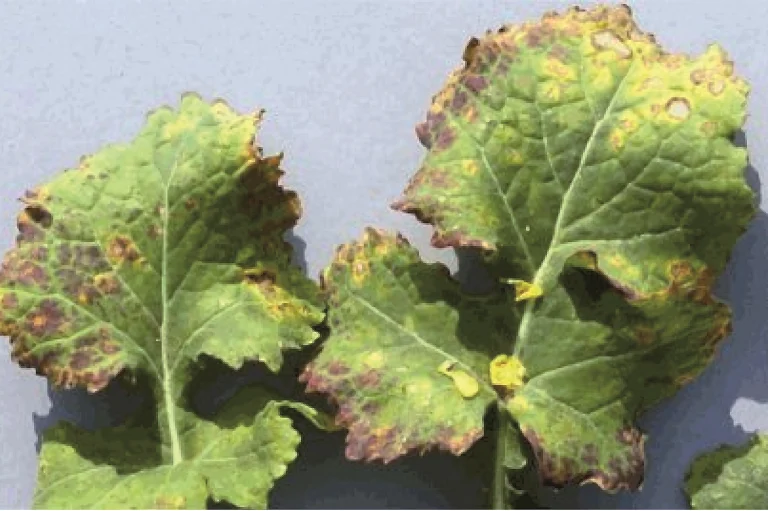
Aphid vectors of turnip yellows
Peach-potato aphid

Peach-potato aphid
Identification
1-2 mm long, oval in shape and varies from green to pale yellow and pink and these can all occur in the same colony.
Symptoms
Aphids are generally dispersed on the underside of leaves and rarely form dense colonies. Economic damage is as a result of the transmission of viruses rather than direct feeding damage which can cause some leaf distortion of young growth.
In winter oilseed rape this aphid can transmit TuYV (previously classified as beet western yellows virus) as they feed. The symptoms, which can appear in late spring, are an interveinal yellowing of the leaves and a red or purpling of the leaf margins which can be confused with nutritional disorders.
Life-cycle
The winter host is peach or nectarines, alternatively they can overwinter in the mobile stage on a wide range of other plants. Winged aphids appear from May onwards and when crowded the aphids tend to walk to neighbouring plants which further spreads any viruses which they carry. Summer hosts are numerous and includes over 40 plant families including peas, sugar beet and brassicas and in August/September winged forms can migrate to crops of winter oilseed rape.
Importance
This species is a major pest on potatoes, sugar beet, lettuce, brassicas and legumes and can transmit more than 120 plant viruses.
TuYV is thought to be widespread throughout the UK although more prevalent in the oilseed rape growing areas in the south of England and crops are most at risk in mild autumns favourable for aphid invasion.
TuYV is economically a very important disease in oilseed rape as it affects the numbers of pods per plant, the number of seeds per pod and the oil content per seed. In trials yield losses of up to 25 % have been recorded.
Threshold
None established.
Resistance
The vast majority of M. persicae are now MACE (resistant to pirimicarb) and quite a high proportion are KDR (i.e. resistant to pyrethroid insecticides). There is no resistance to neonicotinoid insecticides.

Peach-potato aphid


